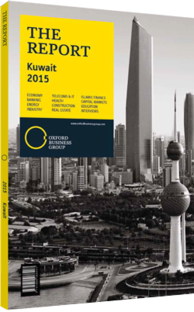Banking
THE COMPANY: Recognised as the leader in the local banking industry, National Bank of Kuwait (NBK) was established in 1952 as the first local and national bank, and the first joint stock company in Kuwait and the Gulf region. NBK is the largest financial institution in Kuwait with total assets of KD21.8bn ($75.1bn) and the top market share at around 32% of banking services.
NBK has steadily earned the highest credit ratings among Middle Eastern banks from international agencies in recognition of its high quality of assets, strong financial performance and solid capital base. Moody’s, Fitch Ratings and Standard & Poor’s have assigned NBK long-term ratings of Aa3, AA- and A+, respectively. The bank is also the only lender in Kuwait to have access to both conventional and Islamic banking markets after acquiring a 58.4% stake in Boubyan Bank.
NBK has historically acted as lead financer for the majority of public contracts awarded to foreign companies, and the institution’s size places it in a preferential position to exploit larger credit opportunities compared to its domestic peers. It is one of the few local banks with the capacity to structure and underwrite large capital market transactions.
Despite sluggish economic conditions and the uncertainties in the equity market over the last five years, NBK was able to grow its asset base by a compound annual growth rate (CAGR) of 11%, to stand at KD21.8bn ($75.1bn) as of December 2014, exceeding the sector growth rate of 9.2% over the same period. Such solid growth relative to its peers underscores the bank’s dominant position. Over the 2009-14 period, and despite the slowdown in banking activities seen in 2010-11, NBK’s total loans volume recorded growth of 8.8% to stand at KD11.9bn ($40.9bn) as of December 2014.
At the same time, the ratio of non-performing loans (NPLs) has shown gradual improvements to come to stand at 1.5%, down from a high of 2.8% in 2012, upon the full consolidation of Boubyan Bank. The bank maintained a high NPLs coverage ratio, well above the sector average and among the highest as compared to its peers, as the bank strived to take additional precautionary reserves against potential credit defaults.
NBK’s deposit base has grown at a higher pace as compared to the loans portfolio given the strict lending policy of the bank; that is at a CAGR of 11.4%, above sector average growth of 9.8%, to reach KD18.6bn ($64.08bn) in December 2014. On the other hand, the loan-to-deposit ratio has been trending downwards since 2010, given the stringent lending policies across the sector, and stood at 66.6% as of December 2014. NBK enjoys a high level of capital adequacy with the total capital adequacy ratio at 14.5%. The bank has also maintained a solid equity base with an equity-to-assets ratio of 12.2%, above the sector average of 11.4%.
A challenging operating environment and a high level of provisions and impairments have put pressure on bottom line results. NBK’s net profit grew by 9.9% in 2014 to reach KD262m ($902.64m), following the significant drop of 22% in 2013, owing to a lower operating income and higher provisioning. Accordingly, core profitability ratios – return on average assets and equity – remain low, at 1.3% and 10.1%, respectively, in 2014.
DEVELOPMENT STRATEGY: NBK’s new diversificationfocused strategy is based on four pillars: defending and growing domestic leadership through excellence; expanding international and regional presence by leveraging fundamental strengths and capabilities; establishing an Islamic franchise by building Boubyan Bank’s capabilities; and building a leading regional investment bank by expanding NBK Capital’s strength.
Going forward, NBK’s performance will remain strong and healthy, as the bank maintains its same core shareholder base since foundation, coupled with stable and strong management. Likewise, we envision that NBK will maintain its solid position in the local market as one of the leading banks, having the largest loan portfolio and deposit base. The bank’s vision remains focused on diversification, strengthening and developing its brand regionally as it continues to pursue its selective approach to identifying further opportunities within the region.
You have reached the limit of premium articles you can view for free.
Choose from the options below to purchase print or digital editions of our Reports. You can also purchase a website subscription giving you unlimited access to all of our Reports online for 12 months.
If you have already purchased this Report or have a website subscription, please login to continue.

